
Our Fish
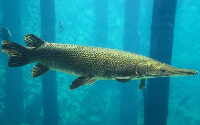
Alligator Gar
A freshwater predator indigenous to the USA and widely imported into Thailand. The prehistoric looking Alligator Gar is an aggressive predator, but not easy to catch due to the abundace of natural food in the lake. Pieces of fish, squid or chicken are your best chance of landing an Alligator Gar. If you hook one call for assistance with the unhooking because they are aggressive on the bank and can do serious damage with their large teeth.
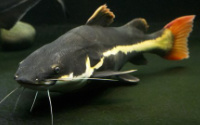
Amazon Redtail Catfish
A member of the Pimelodidae (whiskered catfish) family found throughout the Amazon Basin. The Redtail Catfish is present in various freshwater fisheries in Thailand. Most anglers use chicken hearts as bait but they will take all manner of food including bread, paste, pieces of fish and boilies. Baits are fished on the bottom 10m to 20m from the bank during morning and afternoon. As the sun goes down and shaddows appear they can be caught 1m from the bank. They are strong fish and will make for the nearest overhanging tree, weed or snag.
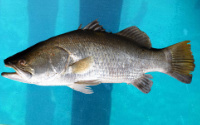
Barrmundi
The Barramundi is imported to Thailand and is a hard fighting fish with it's aerial and acrobatic manouvers during the fight. They are euryhaline, which means they can live in salt or fresh water and they adapt very quickly to rapid changes in salinity with little or no acclimatization at all. Fly fishing will often tempt a barramundi to bite. If you hook one keep the line tight because they will jump and try to shake the hook free.
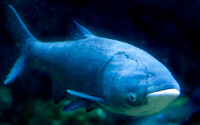
Chinese Bighead Carp
As the name suggests this carp is of Chinese origin and widespread throughout Asia, including Thailand. They are difficult to catch because of their filter-feeding habits, but your best chance is early morning or evening. Float fished corn, maize, banana, pieces of vegetable are the best baits fished in the lower portion of the water. These fish are quite sensitive to any resistance and will easily detect any weights.
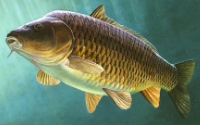
Common Carp
Found throughout the world and stocked in various freshwater lakes throughout Thailand. Most often caught on the bottom using bread or boilies. Method feeders work particularly well, or try loose feeding boilies over a single hook bait. Popups just off the bottom also work well. They will feed throughout the day but morning and late afternnon is the best time.
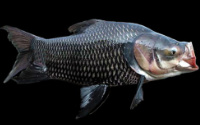
Siamese Carp
The Siamese Carp is found in lakes and river systems of Thailand, Cambodia, Laos and Southern Vietnam. It is the largest carp species in the world. Fruit or krill boilies fished on the bottom using a method feeder is most likely to prduce a bite. Paste or bread fished at or near the bottom will also work. Occasionally they will take bread floated on the surface. Tricky fish to catch.
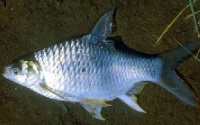
Silver Barb
One of the most popular farmed food fish in Thailand the Silver Barb makes good sport on light float fishing tackle. Bread, corn, paste are the most common baits but they will also take worms, small pieces of fish or chicken. Silver Barb will of often take the bait as it hits the surface or falls through the water.
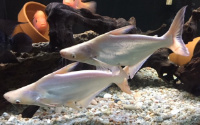
Striped Catfish
A member of the Pangasiidae (shark catfishes) family and is a native species to Thailand. They are muscular fish and will make powerful runs especially as they near the bank, so don't set the drag too tight. Bread, paste, boilies are the main baits generally fished on the bottom but they will take and almost any depth.
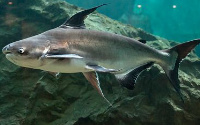
Mekong (Choa Phraya) Catfish
In the past Mekong Catfish in Thailand have grown to almost 300kg in the wild. However, they are now an endangered in its wild habitat but are widely stocked into fishing lakes. Much more difficult to catch then the Stripped Catfish but will take similar baits.
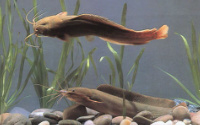
Walking Catfish
A very popular eating fish in Thailand the walking catfish is also popular with Thai anglers. They will take all types of bait fished on the bottom and will sometimes take a small sinner or immitation fish.
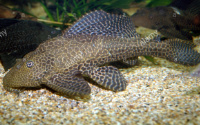
Suckermouth Catfish
This armoured catfish is a shy bitter and many times only caught by accident. Although Suckermouth catfish will accept any bait offered using paste or bread fished on the bottom is probably the best tactic. They tend to feed late afternoon and evening.
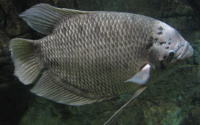
Giant Gourami
The Giant Gourami is an extremely beautiful and ornamental fish found throughout South East Asia. Almost always caught on the surface using bread, floating pellets or dog buscuits as bait. They will also take flies. Usually caught in the margins. If you want to target Gourami you will need a lot of patience because they are not voracious feeders.
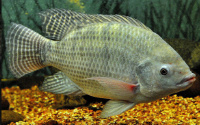
Nile Tilapia
The Nile Tilapia is a perch-like fish originating from the African subcontinent and is extensively farmed in Thailand in aquaculture. Bread, worms, corn or paste fished from bottom to mid water is the best way to catch these fish. When handling them beware of the spines on the fins, always use a wet cloth.
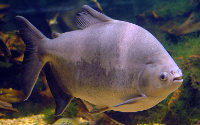
Pacu
The Pacu in Thailand is a close relative of the Piranha group of fish found in South America. In the wild they feed on fruits, nuts and small fish. Boilies work especially well, but they can also be caught using most baits and occasionally spinners. Always use forcepts or pliers when unkooking a Pacu. They have a strong jaws and interlocking teeth that are capable of removing the end of your finger!
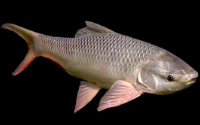
Rohu or Esok
The Rohu is a member of the carp family of fish and is widely distributed throughout Asia in Pakistan, Nepal, Myanmar and Bangladesh in addition to Thailand. In they wild they feed on insects, crustaceans, plant and vegetable debris. Any bread or flour based bait will work as will boilies. When hooked they will often make a fierce run near the surface.
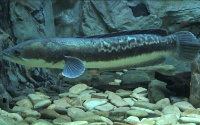
Giant Snakehead
The Snakehead is a voracious predatory fish species that is native to Thailand and Southern Asia. They are aggressive, especially if they have young offspring to protect. Snakeheads are ambush predators and can be caught using spinners or immitation frogs that skim on the surface. Lures that make a noise when retrieved work best.
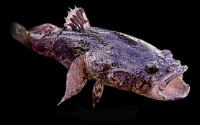
Marbled Goby
The marble goby is a widely distributed species of fish in the family Butidae native to fresh and brackish waters of the Mekong and Chao Praya basins, as well as rivers and other water bodies in Cambodia Thailand, Malaysia, Singapore, Indochina, the Philippines, and Indonesia. It is among the largest gobioid fish, though most do not exceed 30cm.